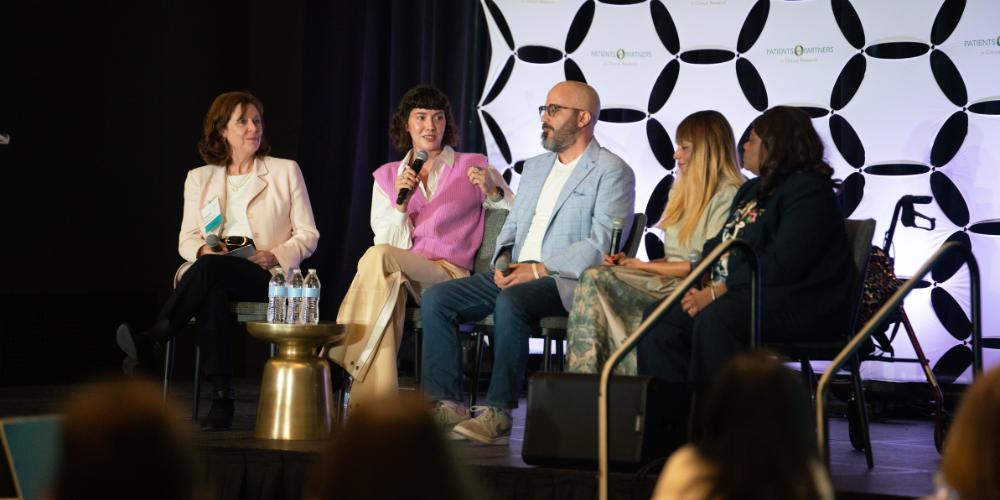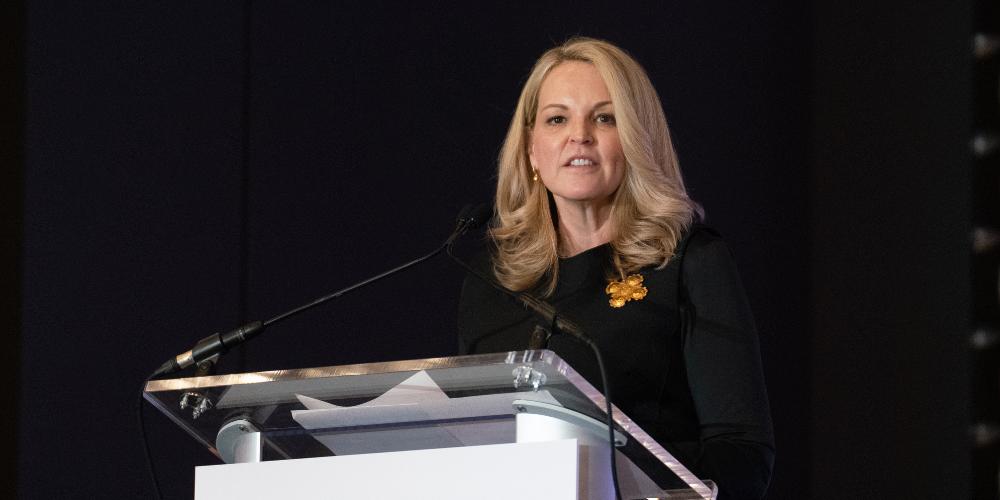
What is digital accessibility?
Digital accessibility is the practice of designing and developing software user interfaces so that everyone, including people with disabilities can effectively understand, interact, and respond meaningfully to the digital content – including readability and translation for language literacy – whether by their own means or with the aid of assistive technologies. This practice includes the use of plain language, translations, and inclusive design principles.
At Merck, our company-wide digital accessibility policy is one of our most far-reaching policies, because it touches practically everything we do, which is most often in the digital space. Digital accessibility standards apply across the entire drug development lifecycle: from preclinical to market access and commercial, including manufacturing and the shop floor.
Why is it important to make digital accessibility a priority, particularly now?
I think the need for digital accessibility has always been with the digital age. The awareness of accessibility in the physical environment has been around for a long time. The first curb-cut in the US in 1945 led to the Rehabilitation Act in 1973 and the Americans with Disabilities Act in 1990. Today we see that extended country laws in Canada, Israel, and the European Accessibility Act this year in 2025.
In terms of pharma, Tufts Center for the Study of Drug Development completed a study in 2023 on the post-pandemic uptick in digital touch points with patients in clinical trials. Recruitment and retention apps, eDiaries, informational web channels have all significantly increased.
At Merck, patients are our purpose – and I would add all patients. Patients, by their very nature, have comorbidities, frailties, and disabilities. Disease states come with disabilities. Treatments and therapies can cause disabilities (whether they be situational, temporary, or permanent). For example, chemotherapy can cause peripheral neuropathy to the fingers and toes Of course, as we all age, we acquire disabilities. Additionally, there is often a digital divide with aging populations, where digital literacy, adoption, and access to broadband can be Social & Digital Determinants of Health.
With 20-25 percent of the US population having some form of disability, not designing for digital accessibility in clinical studies is potentially missing a significant amount of data from People with Disabilities (PwD) and other marginalized populations.
"Digital accessibility standards apply across the entire drug development lifecycle."
How do you begin/prioritize?
With the Merck company-wide priority of patients being our purpose, we began with patient and consumer facing digital channels in the commercial space. We have already started in manufacturing with eLeaflets, and are now exploring opportunities in clinical trials and those digital touch points.
How is the accessibility program structured?
At Merck, our company-wide policy for digital accessibility is implemented in a matrixed model led by myself and the Office of Corporate Accessibility. From the top we have co-sponsorship from the Chief Diversity Office (thought leadership and policy owner), Chief Technology Office (to enable the thought leadership) and the Chief Strategy Office (to empower the business to advance accessibility across the digital portfolio).
To guide the implementation of the policy we have a cross-organizational Accessibility Leadership Forum. To implement the policy with the business, we have an Accessibility Steward Network (one in each country or cluster of countries that we operate). We also work closely with various company support functions, ensuring that accessibility standards, controls, and language are baked into design systems, the systems development lifecycle, and procurement.
Why was co-sponsorship across functions so important?
To ensure resiliency in a large organization where restructuring and change are a given, co-sponsorship can be a key factor. If accessibility is centered in only one part of the organization – such as IT, product, compliance, or customer experience – there is a risk of losing that function in a restructuring. In observing other industries, companies that had accessibility programs positioned within product development now have them under DEI. Other companies that were IT-focused have lost accessibility engineers due to restructuring.
With the current social and political trends, it will be interesting to observe how digital accessibility programs adapt. The truth is that disabilities are part of the human lived experience; and for all of us to equitably participate in this life in the digital age, digital accessibility remains a human right.
"To ensure resiliency in a large organization where restructuring and change are a given, co-sponsorship can be a key factor."
How specific does the policy get and how is it applied to Merck’s diverse set of business units?
Our digital accessibility policy is a company-wide policy, and applies to all divisions, business units, regions and countries. It’s only about 10 pages in length, with high-level sections about scope, standards, purpose, training, implementation, procurement, roles & responsibilities, and policy extensions. However, it is not very detailed in terms of how to apply to particular digital channels or business processes. So beneath the policy we currently have a couple of standard operating procedures that are specific to accessibility standards and procedures; and beneath them we have an array of job aids for specific channels and processes.
What does the standards SOP cover?
This SOP details the specific accessibility standards and criteria of the Web Content Accessibility Guidelines. Our policy uses the latest version 2.2 AA standard. Beneath this SOP we have a few Job Aids: one around inclusive design principles, another providing specific instructions on video captions and transcripts, one providing guidance on creating accessible training modules for your company’s internal learning management system, and most recently we added instructions for email direct marketing.
These Job Aids are meant to be channel-specific, and so we’ll continue to create more based on the company accessibility implementation roadmap. Next, we’ll be publishing job aids for PDFs and podcasts.
"While thought leadership may be the easier part, ensuring that the business prioritizes the implementation and remediation is the difficult part."
What does the procedures SOP cover?
This SOP details specific processes for implementing accessibility in workflows, and maps directly to the stages in our systems development lifecycle (SDLC). Beneath this SOP we have several Job Aids: the first details the Accessibility Lifecycle & Controls, followed by the Enterprise Accessibility Platform System of Record, Supplier Accessibility Assessment, Procurement, Testing (both automated and manual), Extension Requests, and Overlays (which is specific on why not to use). Next, we’ll be looking to explore a Job Aid for digital publishing and content approvals.
How did you structure responsibility to ensure that this work actually gets done?
In our company-wide policy, the business owner of the digital asset is ultimately responsible for ensuring accessibility standards. Of course, there are most often a lot of stakeholders and subject matter experts providing input and support. This is where the guidance provided by the SOPs and Job Aids enables the teams to advance accessibility – from accessibility controls in the SDLC, to accessibility language in supplier master service agreements and contracts, to accessibility assessment of vendors and their software, to creating captions for videos and so on.
Additionally, we have a multi-year accessibility implementation and remediation roadmap that not only impacts the digital assets in the commercial space, but also research, manufacturing, as well as our internal workforce systems and tools. To inspire teams to manage this roadmap, our internal audit team includes cumulative accessibility requirements in the annual audit.
What are some of your lessons learned?
I’ve learned that the most important consideration is communication: what, to whom, and when (how often). In a large organization you can’t communicate enough. But in a global organization what is communicated must be done with the utmost care – otherwise you’ll have a backlash of misinterpretations and a flood of questions.
I’ve also learned that while thought leadership may be the easier part, ensuring that the business prioritizes the implementation and remediation is the difficult part. Knowing how policy is rolled-out and how that relates to the budget cycle is critical. A policy may be company-wide, but one needs to communicate in a timely and consistent manner so the business can plan effectively.
In This Article








